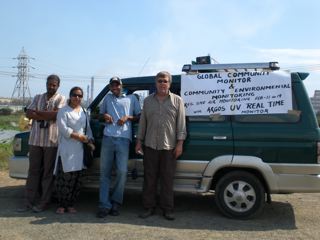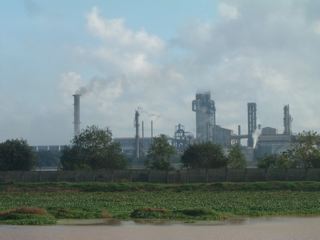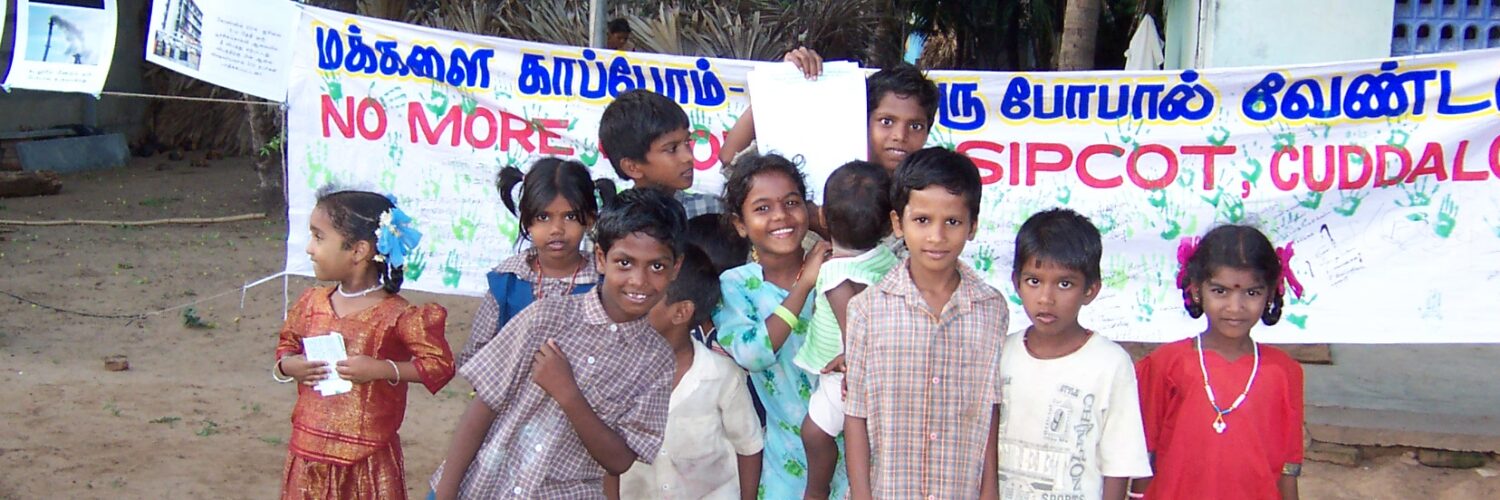12 February, 2008. CHENNAI — Levels of hydrogen sulphide, a potent neurotoxin that smells of rotten eggs, was detected at roughly 1400 to 29000 times above permissible levels at various locations within Chennai city and Manali. A steady gust of Ammonia up to 7.4 times higher than permissible levels, and a one-hour average of sulphur dioxide – another deadly gas commonly associated with industrial and vehicular pollution – at 13 times permissible limits was detected at a location downwind of Madras Fertilisers Ltd in Manali. Within the city, sulphur dioxide was 5 times higher than acceptable levels near Flagstaff House, on the Northern bank of the River Cooum. Chennai-based community support organization Community Environmental Monitoring and San Francisco-based Global Community Monitor are testing a real-time air monitoring equipment in India that has been successfully used by pollution-impacted communities in USA to verify the claims of regulatory agencies and polluters.

The realtime monitoring team in Manali
The pollution levels were recorded by a mobile real-time air monitor manufactured by US-based Argos Scientific, which brought the instrument to demonstrate it to community groups in India. Fondly nicknamed the “hound” by community groups for its remarkable smell-detection capabilities, the Argos monitor uses ultra violet rays to continuously examine the air to detect, identify and quantify certain poisonous gases in the air. The Hound tests for toxic gases such as benzene, butadiene, naphthalene, styrene, toluene, xylene, carbon disulphide, hydrogen sulphide, nitrous oxide, sulphur dioxide, mercury, ammonia, phenol, formaldehyde and acrolein.

Levels of hydrogen sulphide, sulphur dioxide
and ammonia downwind of Madras Fertilisers Ltd
were dangerously high.
The levels of hydrogen sulphide around the Cooum River, near MLA Hostel, state guest house, and behind Ezhilagam where public demonstrations are permitted were more than 1000 times higher than safe levels. The characteristic smell of the Cooum, and all streams, rivers and canals in Chennai, is because of hydrogen sulphide. The gas causes eye irritation, gastrointestinal disorders and respiratory problems. More dangerously, it attacks the central nervous system, and affects children’s mental development. The children living along the banks of the Cooum are likely to be among the worst affected. Community Environmental Monitoring, however, said that the Government should not use this as an excuse to evict the riverside houses. Rather, the river should be cleaned up. Metrowater is a significant contributor to sewage pollution of Chennai’s rivers.
| Name of Gas | Location | Levels found in parts per billion |
Times above safe limits |
|---|---|---|---|
| Hydrogen sulphide | Opposite Flagstaff house, north of Island Ground |
1394 | 1671 |
| Hydrogen sulphide | Eastern side of the Government Women’s Hostel along Cooum | 2383 | 2857 |
| Hydrogen sulphide | Behind Ezhilagam on the eastern bank of Cooum | 1474 | 1767 |
| Hydrogen sulphide | Downwind of Madras Fertilisers, Manali |
24,794 | 29,729 |
| Hydrogen sulphide | Near CPCL | 3724 | 4465 |
| Sulphur dioxide |
Near Flagstaff house |
157 | 5 |
| Sulphur dioxide |
Downwind of Madras Fertilisers | 400 | 13 |
| Ammonia | Downwind of Madras Fertilisers | 4275 | 7.4 |
Safe limits of Hydrogen sulphide in the air is 0.834 ppb as per United States Environmental Protection Agency. India does not have standards for hydrogen sulphide (H2S) in ambient air. In India, the safe levels for Ammonia is 575.29 ppb and for SO2 (sulphur dioxide) is 30.51 ppb.
For more information, contact:
Shweta
Narayan. Community Environmental Monitoring. 9444024315
Websites:
